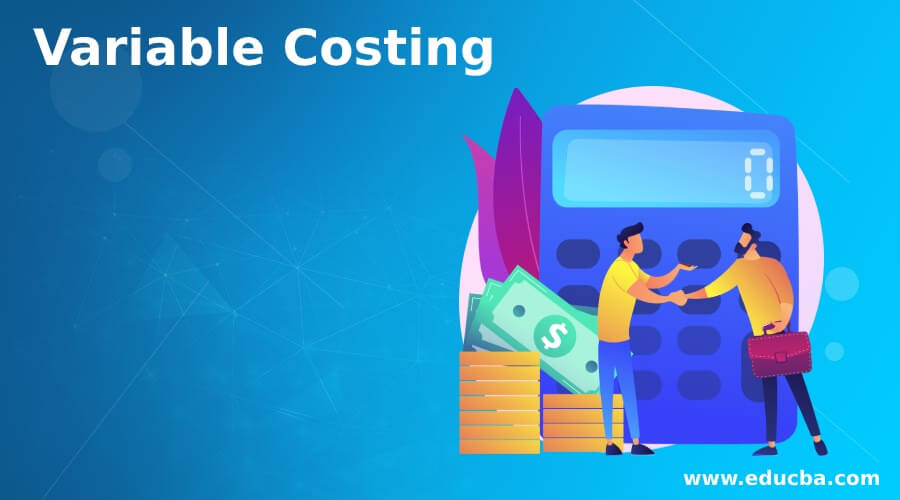Updated July 18, 2023
Introduction
Variable costing refers to the direct costs and variable overhead incurred in producing or manufacturing a product or service, excluding all fixed costs.
It focuses on costs directly impacted and affected by changes in production, unlike fixed costs, which are static and stationary. Management frequently uses it to conduct break-even analysis and determine the contribution margin. These are also marginal, direct, differential, and out-of-pocket costs.
A product or service manufactured or delivered by a business has some accompanying costs. They are fixed costs that do not change frequently and variable costs that are directly affected by production volume. Variable costing is simply the study of the variable cost components used in manufacturing a product or service by a business. It varies with the units of production, making it an ideal costing measure for making decisions related to scaling, accepting new orders, and prioritizing products in a business portfolio.
Features of Variable Costing
- It is easy to compute, as all variable costs are easily identifiable.
- Variable costs can be attributed to units produced, and there is a linear relationship between the increase in production and variable cost.
- It provides management with information on cost behavior and its impacts on profitability.
- All costs are bifurcated into fixed and variable, and only variable costs are accounted for.
Example
Here is an example to understand the concept along with its utility.
ABC International incurred the following manufacturing costs in the production of 100,000 mobile phones during January 2020:
| Direct Material | $130,000 |
| Direct labor | $50,000 |
| Variable expenses per mobile set | $12 |
| Variable expenses | $1,200,000 |
| Fixed Rent Charges of factory | $15,000 |
| Fixed Technology charges | $19,000 |
| Equipment Charges (fixed) | $28,000 |
| Total Manufacturing Cost | $1,442,000 |
| Total units manufactured | $100,000 |
| Per unit Manufacturing Cost | $14.42 |
(Excel sheet attached)
Recently, ABC International was approached with a special order to manufacture 50,000 mobile phones for one of its corporate clients. The client offered $14 per unit, initially rejected by the Costing Head. However, the new CEO insisted that the company compute its variable cost of the product, as fixed costs were already incurred and excess capacity was available to manufacture the required 50,000 units of mobile phones.
Since variable costing focuses only on variable cost factors, the per-unit variable costing is computed as follows:
For 50,000 units, all variable costs, such as direct material and direct labor, will be 50% of the above cost, as was incurred for 100,000 units of mobile phones.
| Direct Material Cost | $65,000.0 |
| Direct labor | $25,000.0 |
| Variable Expenses | $600,000 |
| Total Variable Costing | $690,000.0 |
| No. of Mobile Units | 50000 |
| Per Unit Variable Cost | $13.80 |
Since the variable cost is less than the $14 offered to ABC International, it should accept the special order, which will result in a contribution of $0.20 per mobile phone.
Importance of Variable Costing
Variable costing is an essential component of management decision-making exercises. These costs are more relevant and require direct involvement from management, as fixed costs have already been incurred and are irreversible. It allows for meaningful comparisons of profitability between different units within a business, as it focuses on variable cost factors and helps overcome problems related to the allocation of fixed costs, which can be difficult to bifurcate at times.
Advantages
- Variable costing focuses only on variable costs and is directly impacted by changes in production volume.
- It enables cost-volume-profit (CVP) analysis by determining the contribution margin, which can help identify profitable products and improve resource allocation by the business.
- It eliminates the need for fixed cost allocation, which is tedious and subjective.
- Also, it helps in better planning operations by the business and acceptance of orders exceeding the contribution margin.
- It facilitates break-even analysis, which business managers frequently use.
Disadvantages
- Variable costing may misguide management into thinking that the business can operate profitably at a low contribution margin, as it ignores fixed costs, which also impact profitability.
- It helps only in internal reporting, and the business must undertake separate reporting for financial reporting purposes.
- Another challenge with it is related to the bifurcation of costs into fixed and variable, which, in some cases, is impossible as certain costs are difficult to divide into these categories and are semi-variable.
- Another disadvantage is the absence of economies of scale. The variable cost per unit determined based on variable costing components does not remain the same as production volume increases; however, variable costing does not capture this.
Comparison between Variable Costing and Absorption Costing
|
Basis of Comparison |
Variable Costing |
Absorption Costing |
| Definition | Includes costing of product that involves only variable cost. | Includes costing of products that involve both fixed and variable costs. |
| Components of cost | Comprises direct material, labor, variable overhead, and other direct expenses. | Comprises direct material, direct labor, both fixed and variable overhead, and other direct expenses. |
| External-Internal Reporting | Required for internal reporting | Required for external reporting |
| Estimation of the total cost | Can lead to under-measurement of the total cost, as it involves only variable costs. | Provides a complete measure of the total cost as well. |
Conclusion
Variable Costing is an essential component of product costing and part of the internal reporting framework for businesses. It is a useful measure for identifying the costs associated with a product in cases where allocating fixed costs is not feasible or where management is more interested in knowing the additional costs to be incurred in production without considering them.
Recommended Articles
Here are some further articles related to the topic:


